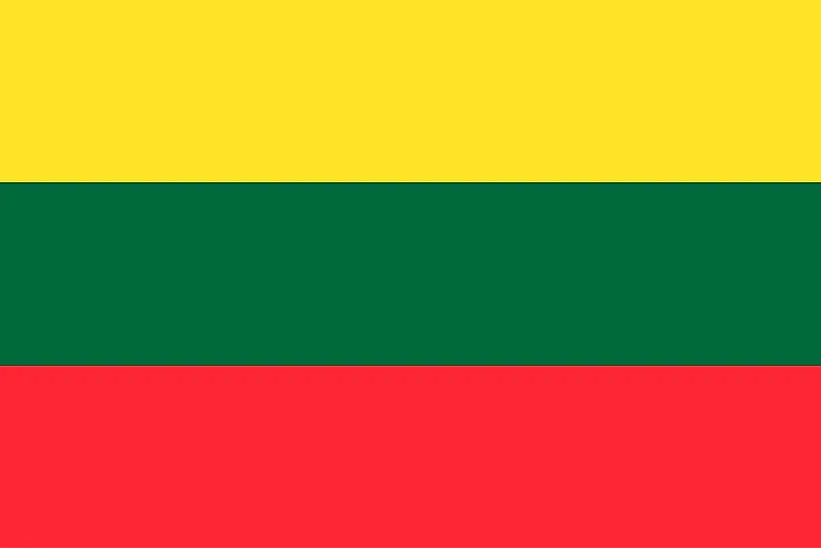
リトアニア
| 大陸 | ヨーロッパ |
| 資本金 | ヴィリニュス |
| 人口 | 2,854,235 |
| GDP | $85.62 億ドル |
| 一人当たりGDP | $29,900 |
| ダイヤルコード | +370 |
| ISOコード(2文字) | LT |
| ISOコード(3文字) | LTU |
リトアニア 風景






リトアニアについて
リトアニアへようこそ!リトアニアは、古代バルト海の伝統と近代ヨーロッパのダイナミズムが融合した国です。人口約280万人、面積65,300平方キロメートルのリトアニアは、優れた文化遺産と技術的進歩を併せ持ち、バルト三国の中で最大の国です。
地理的特徴と自然の美しさ
リトアニアの地理は、有名なキュロニアン・スピットのあるバルト海沿岸から、国土の3分の1を占める広大な森林まで、多様な景観を包含している。地形は主に平坦で、なだらかな丘や氷河活動によって形成された数多くの湖がある。
国土には6,000を超える湖、758の河川、広大な湿地帯がある。変化に富んだ地形が豊かな生物多様性を支えており、特に原生林や沿岸の生態系は注目に値する。
保護地域には、ロシアと共通のユネスコ世界遺産であるキュロニアン・スピット国立公園や、ユニークな湖の景観を保護するゼマイティヤ国立公園などがある。環境保護に力を注いできた結果、自然の生息地がよく保存されている。
文化遺産と伝統
リトアニアの文化は、現存するインド・ヨーロッパ最古の伝統のひとつである。この国の遺産には、ダイノスと呼ばれる独特の民謡、ユネスコに認定された伝統的なクロスクラフト、何世代にもわたって守られてきた豊かな神話などがある。
伝統芸術には、琥珀細工、木彫り、織物、特に伝統的な帯の制作などがある。音楽の伝統には、スッタルティネ(独特の多声部歌)とカンクレープなどの民族楽器がある。
リトアニア料理には、セペリナイ(ジャガイモの団子)やシャルティバルシュチアイ(ビーツの冷製スープ)といったボリュームのある料理がある。クラフトビールの醸造と黒ライ麦パンの伝統は、今も文化的アイデンティティの中心となっている。
歴史の旅
リトアニアの歴史は、バルト民族の連合体としての形成から、強力な中世大公国、様々な占領を経て現代の独立にまで及ぶ。14~16世紀にはヨーロッパ最大の国家だったこともある。
重要な時代には、リトアニア大公国の形成、ポーランド・リトアニア連邦、ロシア帝国の支配、世界大戦間の独立、ソ連の占領、1990年の独立回復などがある。バルトの道デモを通じたソ連崩壊におけるリトアニアの役割は、歴史的に重要なものである。
現代の経済状況
今日のリトアニア経済は、伝統産業と、フィンテック、IT、バイオテクノロジーなどの成長分野が融合している。リトアニアは、新興企業やデジタル・イノベーションの地域ハブとなっている。
最近の取り組みでは、デジタルトランスフォーメーション、グリーンエネルギー開発、フィンテックセンターとしての地位強化に注力している。リトアニアの教育水準の高い労働力と戦略的立地は、北欧のイノベーション・ハブとしての新たな役割を支えている。
国際関係とグローバルポジション
リトアニアは欧州連合(EU)と北大西洋条約機構(NATO)に積極的に参加し、西ヨーロッパとバルト地域の架け橋としての役割を果たしている。サイバーセキュリティとデジタル・ガバナンスにおける同国の専門知識は、国際協力に貢献している。
ご存知でしたか?
- リトアニアはヨーロッパ最後の異教国で、1387年に正式にキリスト教に改宗した?
- ヨーロッパの地理的中心はリトアニアのヴィリニュス近郊にある?
- バスケットボールはしばしばリトアニアの第二の宗教と考えられているが?
- この国には、世界で最も高速な公共Wi-Fiネットワークがある?
結論
リトアニアは、古くからの伝統と現代的な革新が融合したユニークな国です。琥珀工芸からデジタル・スタートアップまで、民俗的伝統からフィンテックのリーダーシップまで、リトアニアは独自の文化的アイデンティティを守りながら進化し続けています。リトアニアは、人口動態の変化やテクノロジーの変革など、現代的な課題に取り組む中で、バルト海沿岸のユニークな遺産を維持しつつ、ダイナミックな欧州国家としての役割を果たすべく努力を続けています。